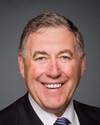You're right in saying that the demographic picture of the public service and that of the population that constitutes the Canadian labour force are different. However, I'm not sure that we really have a problem. We're experiencing the consequences of the way in which we have managed the public service. Furthermore, cuts were made during the program review period, and there were a lot of departures. The figures show that. In addition, postsecondary education requirements are higher. We require that candidates have much more experience. People entering the public service are older. Their average age is 35.
In addition, our pension plan provides incentives for public servants to retire earlier than other workers. In my view, there have been changes in both the public service and the population. However, this is not a crisis. It is a situation that the public service must manage by taking planning measures, training people and implementing programs to hire people accordingly.



